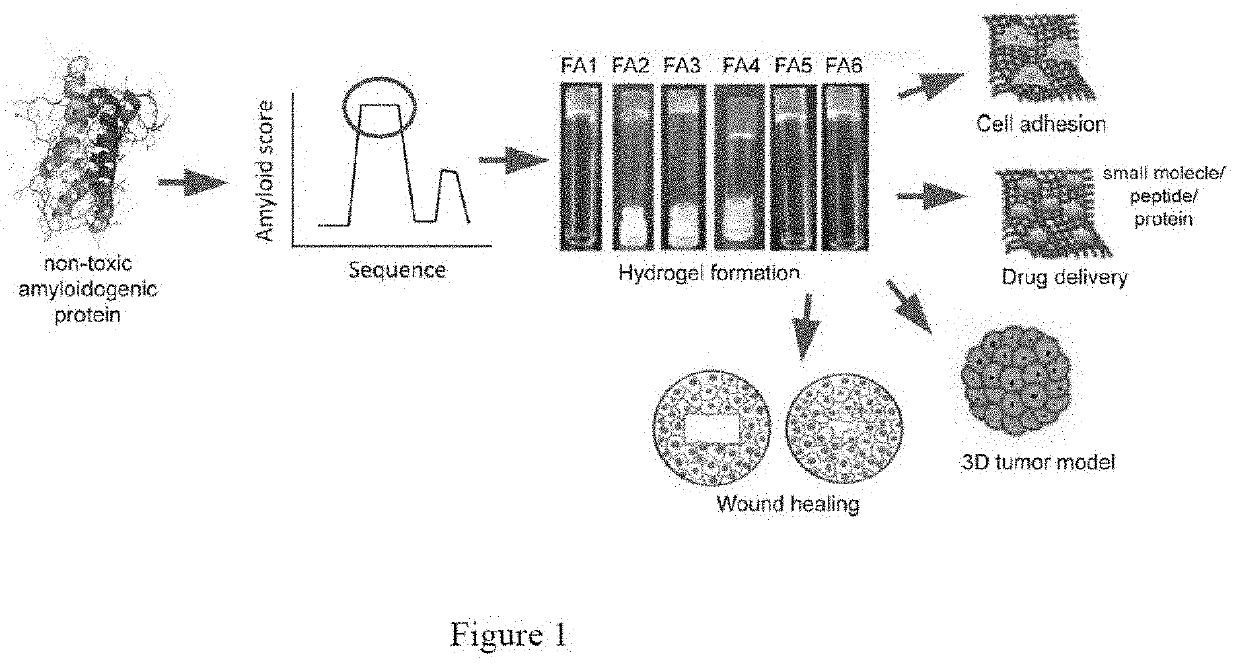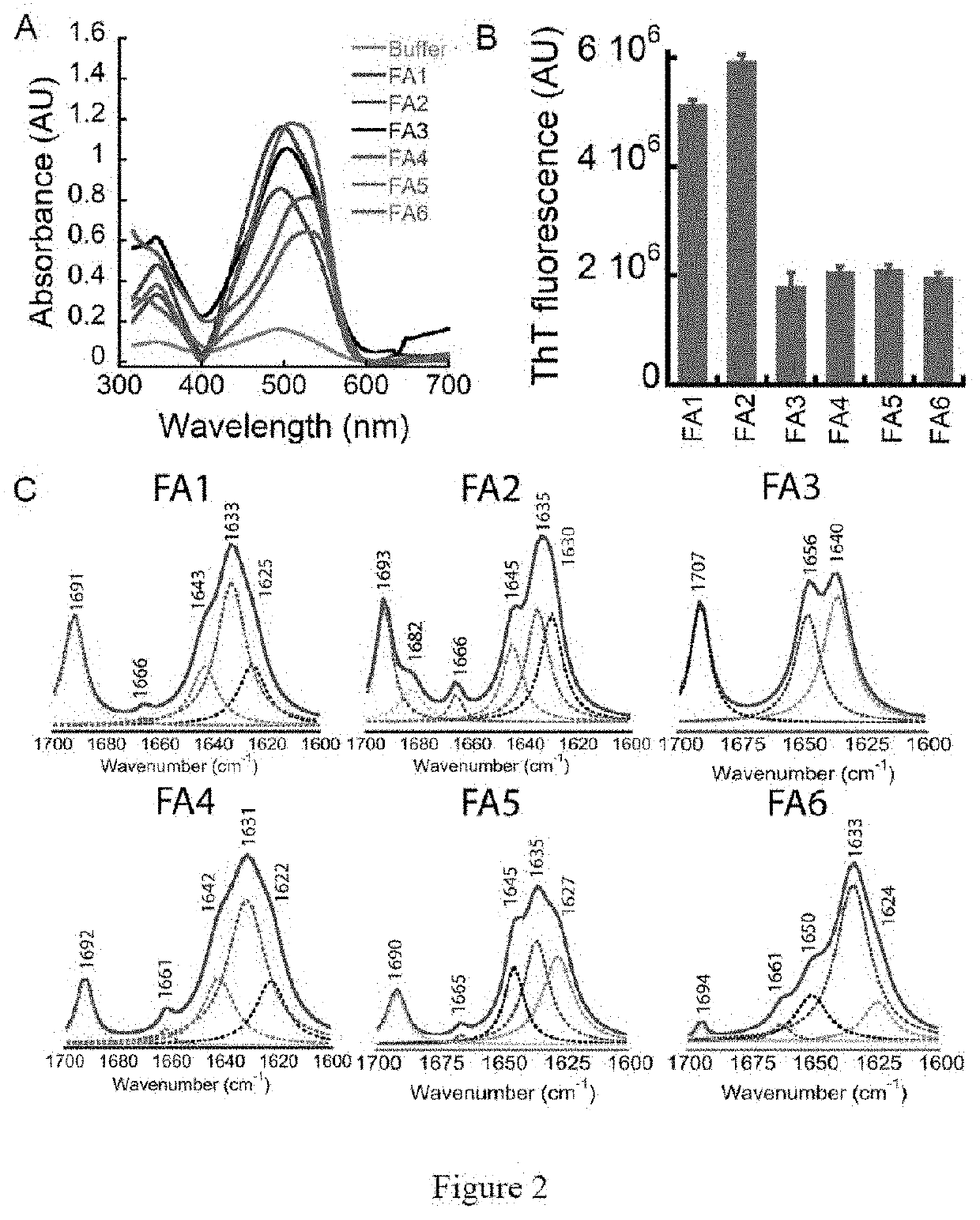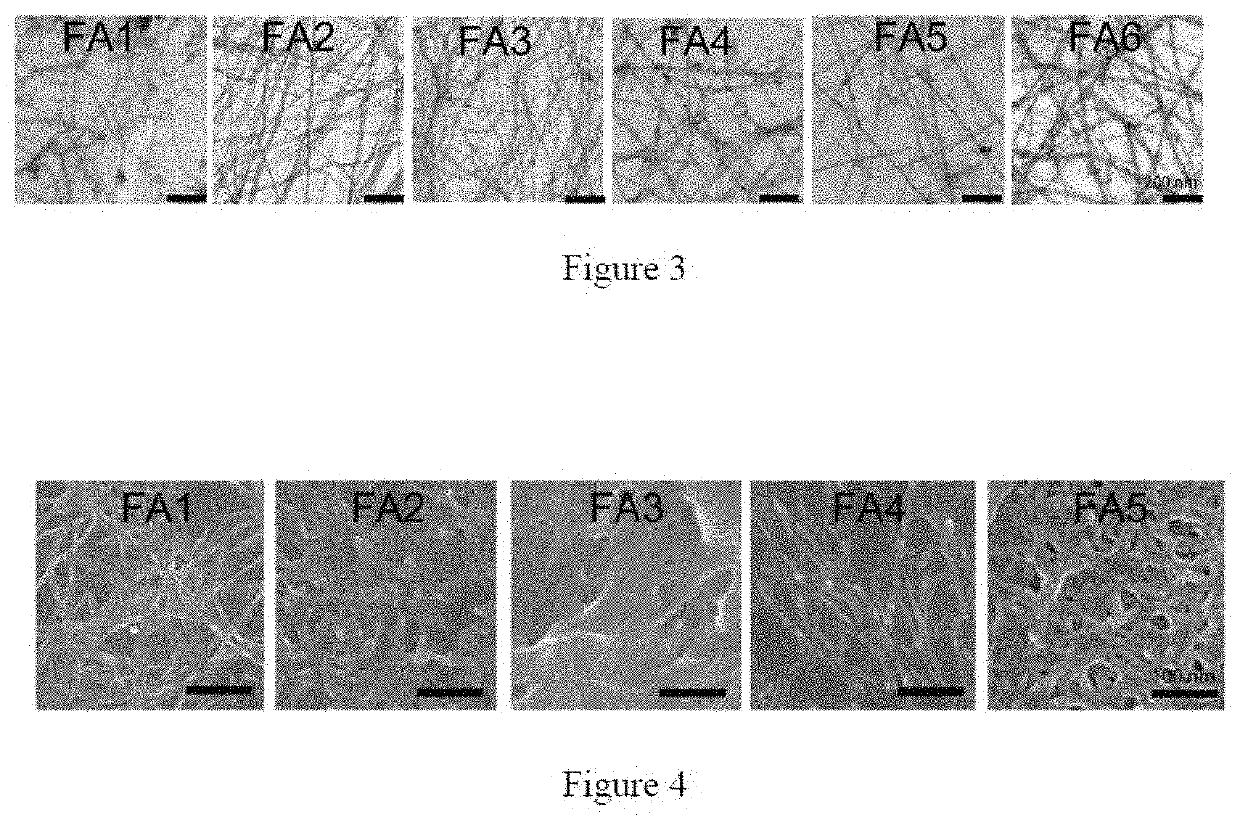Functional amyloid hydrogels and applications thereof
a technology of amyloid hydrogels and amyloid hydrogels, applied in the field of functional amyloid hydrogels, can solve the problems of high attrition rate, need for optimal biomaterials, and significant limitations in reproducing complexity and pathophysiology, and achieves low cytotoxicity, low toxicity, and reduced cross-seeding, amplification and transmissibility characteristics.
- Summary
- Abstract
- Description
- Claims
- Application Information
AI Technical Summary
Benefits of technology
Problems solved by technology
Method used
Image
Examples
example 1
Functional Amyloid Hydrogel
[0223]The hydrogel forming peptides were designed based on the self-assembly of high amyloidogenic segments from various functional amyloid protein / peptides. FIG. 1 depicts the scheme for designing the peptide sequence of the functional amyloid hydrogel. For example, the most amyloidogenic segment from non-toxic amyloid protein was selected by the amyloid segment-predicting algorithm TANGO. The rapid intermolecular hydrogen bond formation of these amyloidogenic peptide sequences would give rise to amyloid fibril networks, which would subsequently form functional amyloid hydrogel by entrapping the water. Moreover, the basic sequence was further modified with addition and substitution of other amino acids to create more peptides along with Fmoc protection at the N-terminus.
example 2
on of the Functional Amyloid Hydrogel
[0224]In brief, 1 mg of each pre-synthesized peptide was dissolved in 200 μl of 20 mM phosphate buffer at pH 7.4 by heating. Subsequently, three heating / cooling cycles and the addition of 150 mM NaCl were performed that resulted in self-sustaining hydrogels. For pH dependent hydrogels, 200 μl of 20 mM phosphate buffer at pH 7.4 was added to peptide, to dissolve the peptide, the pH was initially increased to 10 using 2N NaOH to dissolve the peptides and then decreased to 7.4 for gelation. Few peptides did not require salt for gelation.
[0225]Hydrogel preparation: Generally, 1 mg of lyophilized powder of each designed peptide was suspended in 200 μl of 20 mM sodium phosphate buffer (pH 7.4) and the pH was increased till the peptides dissolve in the buffer. On dissolution the pH of the gel solution was brought back to physiological pH 7.4 and 0-300 mM NaCl was added.
[0226]Gelation study: The gel solution was kept undisturbed at room temperature for 1...
example 3
nt of Hydrogel Swelling
[0229]To determine the dynamic swelling measurements of hydrogels, gravimetric method was used. The hydrogel samples were casted on cover slips and inserted in a well of 24 well plates containing PBS and incubated at 25° C. At different time points the hydrogel sample was taken out from the well, quickly blotted of free surface buffer, weighed in an analytical balance and quickly returned to the well with PBS. FIG. 7 depicts the swelling measurement of the hydrogels, which shows that the gel swells on addition of any kind of solvent / media / buffer.
PUM
| Property | Measurement | Unit |
|---|---|---|
| pH | aaaaa | aaaaa |
| time | aaaaa | aaaaa |
| time | aaaaa | aaaaa |
Abstract
Description
Claims
Application Information
 Login to View More
Login to View More - R&D
- Intellectual Property
- Life Sciences
- Materials
- Tech Scout
- Unparalleled Data Quality
- Higher Quality Content
- 60% Fewer Hallucinations
Browse by: Latest US Patents, China's latest patents, Technical Efficacy Thesaurus, Application Domain, Technology Topic, Popular Technical Reports.
© 2025 PatSnap. All rights reserved.Legal|Privacy policy|Modern Slavery Act Transparency Statement|Sitemap|About US| Contact US: help@patsnap.com



